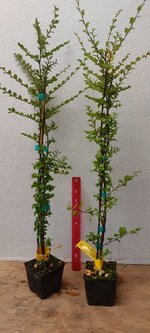LAS
Yamadori
I decided to give this species a try. The cultivar is the puget pillar. These are the two plants I’m getting next week. I can’t decide if I should wire them up and get some movement in those trunks or not. They are supposed to have a very columnar growth pattern. So , I’m wondering if clip and grow would be a bad idea. Anyways, feel free to give your opinions here for the future of these trees. I’m gonna try and show the progress here in one thread over the years. If you have experience with this cultivar please chime in. Much appreciated folks!






